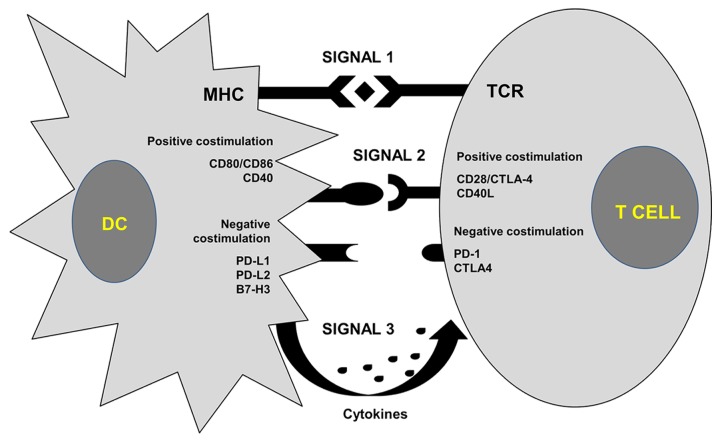Figure 1. Activation of T cells by antigen-presenting cells. Antigenic peptides (rhomboids) complexed with MHC molecules on the surface of dendritic cells (DCs) are recognized by cognate T-cell receptors (TCRs), delivering a first activatory signal (signal 1) to T cells (top). A second signal (signal 2) is delivered to T cells upon the integration of positive (activatory) and negative (inhibitory) co-stimulation, originating from the interaction of specific receptors expressed on the T-cell surface and their ligands. A third signal (signal 3) is delivered by cytokines found in the microenvironment where antigen presentation occurs, which are often secreted by antigen-presenting DCs. Such a cytokine priming generally directs the polarization of T-cell responses. CD40L, CD40 ligand; CTLA4, cytotoxic T lymphocyte-associated protein 4; PD-1, programmed cell death 1; PD-L1, PD-1 ligand 1; PD-L1, PD-1 ligand 2.

An official website of the United States government
Here's how you know
Official websites use .gov
A
.gov website belongs to an official
government organization in the United States.
Secure .gov websites use HTTPS
A lock (
) or https:// means you've safely
connected to the .gov website. Share sensitive
information only on official, secure websites.
